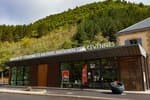
Col de La Planette
4 points of interest

Village de Cassagnas - nathalie.thomas  History
HistoryCassagnas
From a report written by the schoolteacher of Cassagnas in 1874: “Tradition tells us that all of the houses in the parish of Cassagnas were burnt down twice. The date of the first fire has not been passed down to us, but one can still see wall faces in several places that show clearly enough where the houses used to stand... This destruction by fire must have occurred at the beginning of the religious wars, or perhaps it even dates back as far as the English invasion. According to tradition, at the time the village of Cassagnas was located a hundred metres above the current village.” The second fire occurred in 1703, as part of the “great burning” of the Cevennes during the Camisard War. (P. Grime)
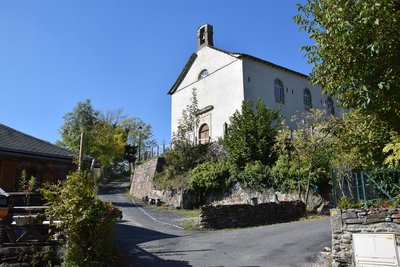
Temple de Cassagnas fraîchement rénové - © com com Florac Sud Lozère  History
HistoryProtestant cemeteries
“Strange Cevennes, all paved with graves! You can see them right by each mas (farm).... Usually there is only a tilestone planted in the ground, with neither cross nor ornament, to indicate a grave,... If the family is well-off, the tombs are enhanced by a zinc contain er that keeps the wreaths dry... There are countless properties where the population laid in the ground is ten times greater than the population still standing!” (Roussel Romain, Almanach Cévenol, 1968).
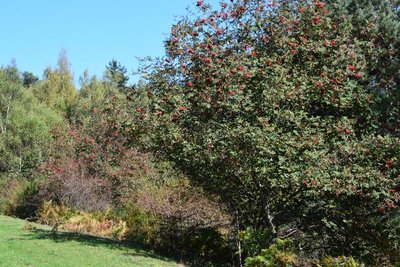
Sorbier des oiseleurs - © com com Florac Sud Lozère  Natural environment
Natural environmentRowan or mountain ash (Sorbus aucuparia)
Sorbus allegedly derives from sorbitio (beverage, herbal tea) and aucuparia from auceps, bird-catcher. In the autumn, bird-catchers used rowan berries as bait in their tendelles or thrush traps. Some are said to have coated the branches of rowans with glue to capture birds. More simply, hunters lay in wait near rowans to catch blackbirds and thrushes. (P. Grime)
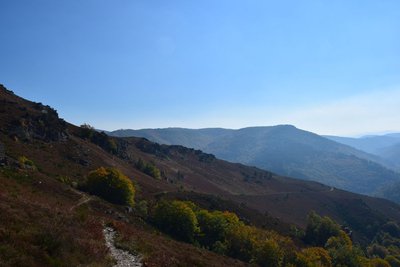
Descente vers Cassagnas à travers la lande - © com com Florac Sud Lozère  Natural environment
Natural environmentHeathland
These transitory landscapes, created by pastureland evolving back into forest, persist due to livestock grazing and slash-and-burn carried out by farmers to maintain grazing areas. Rich in insects, they are frequented by many insect-eating birds. The presence of filed mice and reptiles makes them good hunting-grounds for many birds of prey: buzzards, common kestrels and snake eagles. Different types of heath include broom, heather and fern. (P. Grime)
Description
Leave the car park, turn left and go up the lane leading towards Currières (C3), to the Col de la Planette pass. Continue on the lane for 50 m before taking on your left a forestry track towards the Col de Poulio. At this pass, leave the lane to take the track going downhill on the left (GR 72). Turn left again onto an old path that joins up with the tarred lane, which you take downhill back to the car park.
- Departure : Cassagnas
- Arrival : Cassagnas
- Towns crossed : Cassagnas
Forecast
Altimetric profile
Recommandations
Make sure your equipment is appropriate for the day's weather conditions. Remember that the weather changes quickly in the mountains. Take enough water, wear good shoes and put on a hat.
Information desks
Tourism'house and national Parc at Florac
Place de l'ancienne gare, N106, 48400 Florac-trois-rivières
This office is part of the National Park's associated tourist-information network, whose mission is to provide information on, and raise awareness of, the sites and events as well as the rules that must be observed in the National Park's central zone.
On site: exhibitions, video projections, events and shop Open year-round
Transport
Bus stop: Cassagnas, embranchement RN106
- Bus line 252 Florac – Le Collet de Dèze – Alès.
https://lio.laregion.fr/
Access and parking
From Florac, take the N 106 main road towards the Col de Jalcreste pass for 16.9 km, to Cassagnas
Parking :
Calculateur d'itinéraire Lio
Utilisez le calculateur liO pour organiser votre trajet en région Occitanie.
Autres régions
Calculez votre itinéraire en Auvergne Rhône Alpes sur Oùra
Biodiversité autour de l'itinéraire
Source
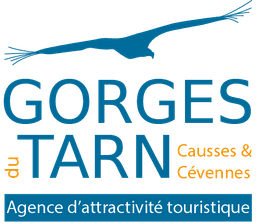

Report a problem or an error
If you have found an error on this page or if you have noticed any problems during your hike, please report them to us here:

